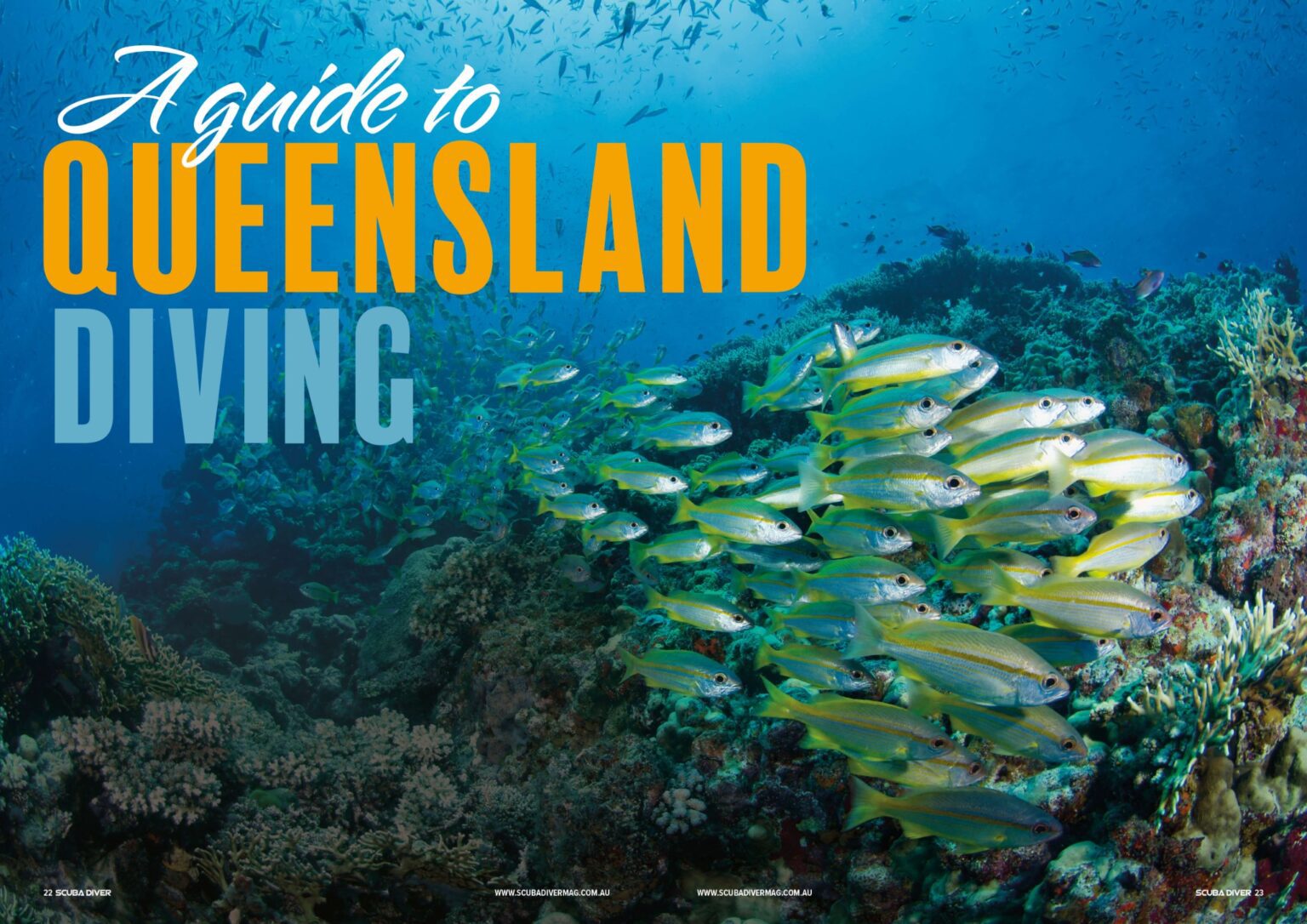Over the coming months, we will delve, State by State, into the magnificent and diverse diving the waters of Australia offer. Australia boasts stunning reefs, kelp forests, a vast array of wrecks, humpback whale migrations, whaleshark aggregations, great white encounters, sea lions, weedy and leafy sea dragons, macro dives galore, a staggering number of endemic species and much, much more. Australia has it all, from thriving tropical warm waters in the north to the abundant cold waters of the south.
Photographs by Adrian Stacey.
We begin this epic journey around Australia in Queensland, home of the most-iconic reef of them all, the Great Barrier Reef. Stretching for over 2,300km and covering an area of approximately 344,400km, this reef is a diver’s paradise, but it is not the only diving highlight the State has to offer. The sunshine state has over 7,000km of coastline, numerous islands and thousands of dive sites. To try and mention all of them in this article is an impossible task. So, perhaps the best way to look at what fantastic diving is on offer is to break the State down into regions and focus on some of the many highlights.
Far North Queensland
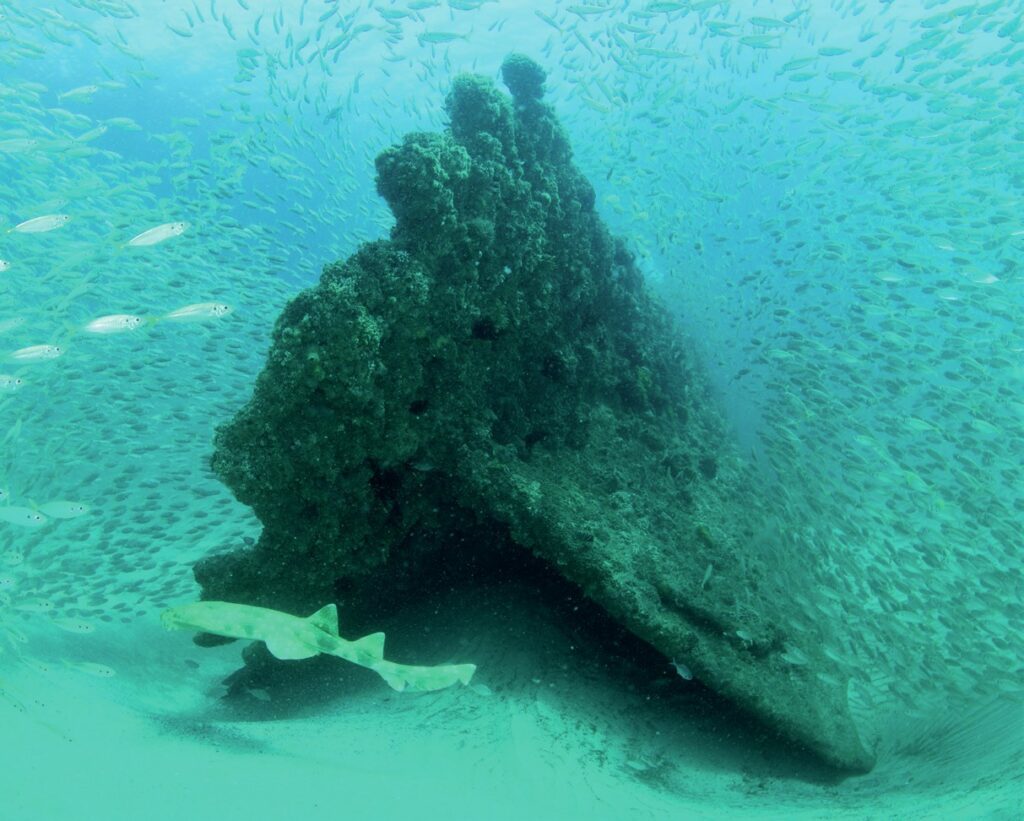
This region spreads from Thursday Island in the north down to around the town of Cardwell in the south and encompasses the northern reaches of the Great Barrier Reef. Above the water, the area boasts beautiful rainforests and spectacular scenery.
The Daintree is the oldest rainforest in the world. People come from far and wide to visit the many national parks and indulge in adrenaline-fuelled activities like white water rafting and sky diving. The tropical climate means average temperatures in the summer are around 32 degrees C while the average for the winter is about 18 degrees C.
Diving is year-round, with water temperature varying from 29 degrees C in the summer to around 23 degrees C in the winter. Most of the diving is conducted from
Cairns and Port Douglas. Cairns is the main hub and has an international airport. Port Douglas is about an hour’s drive north. Diving here is all about the Great Barrier Reef. Places like Milln Reef, Norman Reef, Agincourt Reef, Hastings Reef and Saxon Reef. Islands like Green Island and Fitzroy Island are easily assessable by day boat and offer great snorkelling and diving. There is plenty of marine life, and the corals are in good condition. Liveaboards can take divers further afield, exploring the Ribbon Reefs and some of the isolated reefs of the Coral Sea, Osprey Reef, Holmes Reef and Bougainville Reef, where the diving is even more spectacular. Some liveaboards also offer special exploratory itineraries to visit some of this amazing reef system’s lesser-known, far-north reaches, including Rannie Island and the Great Detached reef.
The Highlights of Far North Queensland
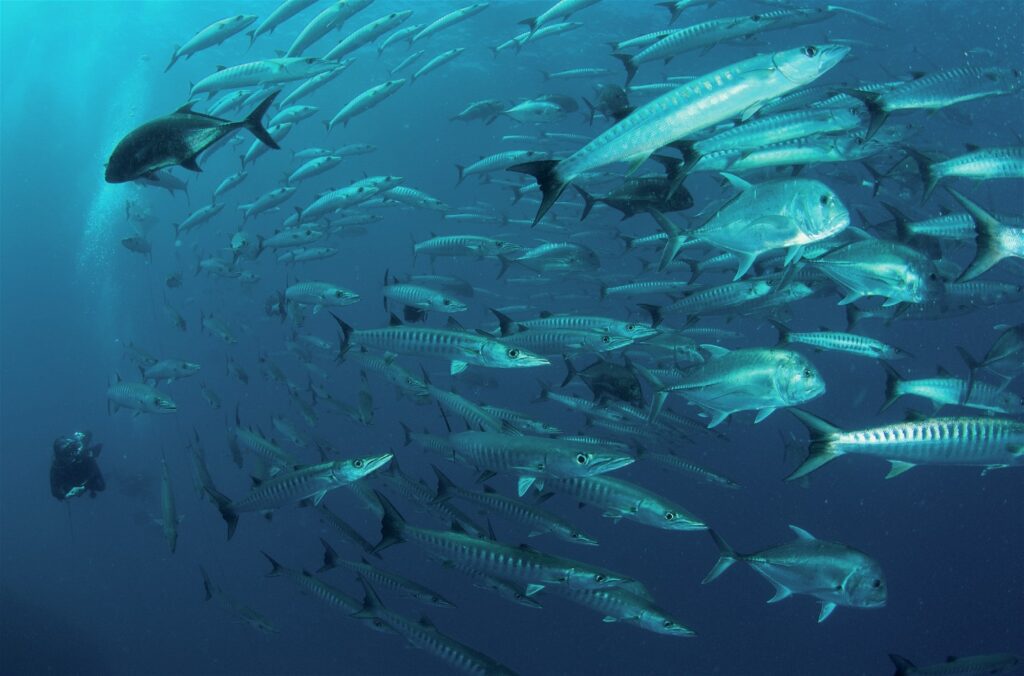
The Ribbon Reefs
This reef system offers some of the best diving on the Great Barrier Reef. Steve’s Bommie is a particular highlight with impressive hard coral, vivid soft corals schooling fish and marine encounters galore. Another of its famous dive sites is Cod Hole, where huge friendly potato cod up to two metres in length congregate.
Osprey Reef
This mind-blowing coral atoll drops from the surface to a staggering 1,000m. It is swathed in vivid soft corals, is home to whitetip and grey reef sharks and attracts plenty of pelagic visitors like manta rays and hammerhead sharks, plus vast schools of fish. Sites like North Horn, Admiralty and Halfway wall are particularly good.
Bougainville Reef
The hard coral cover here is exceptional. Plenty of sharks frequent the reef, plus there are the remains of two wrecks, the Atlas and the Antonio Tarabocchia.
Holmes Reef
This is another isolated Coral Sea reef that offers many superb dive sites. Nonki Bommie has split down the middle with a perfusion of sea fans sprouting from the canyon, while the dive site Amazing has a stunning topography of walls, pinnacles and passageways.
RaineIsland
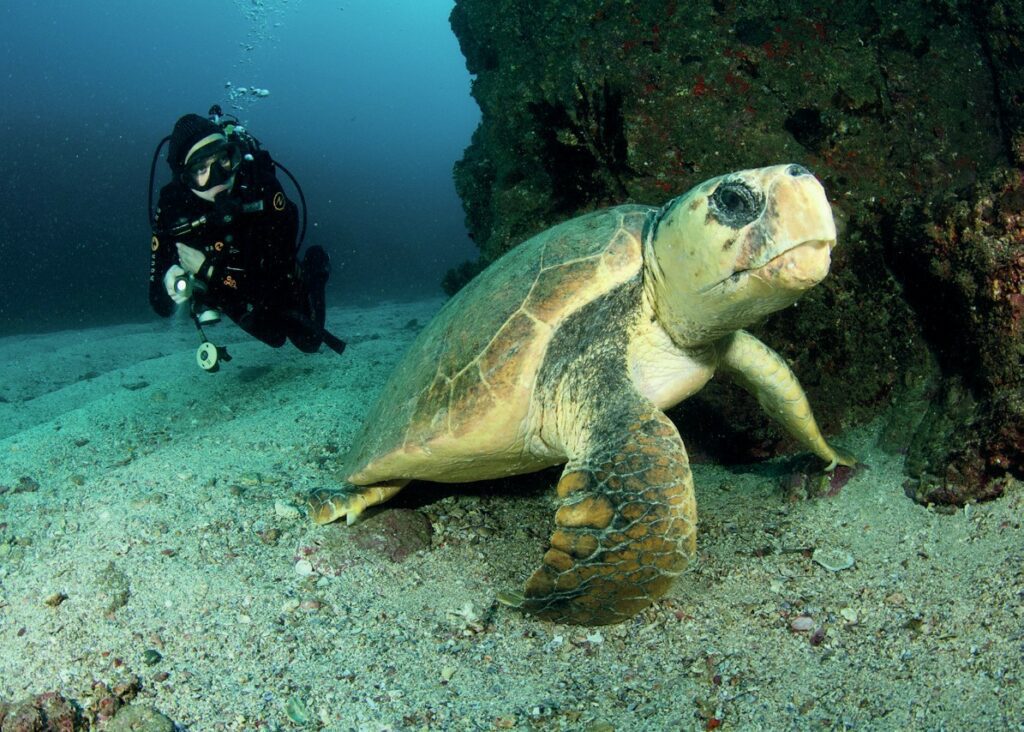
Home to the world’s largest green turtle rookery. Tens of thousands of turtles arrive from November to March and lay their eggs. This influx of prey attracts predators in their droves, including large tiger sharks. The coral coverage is also stunning, and there is the historic wreck of the bounty to visit.
Milln Reef
Just one of the excellent reefs accessible by day boat and only about a two-hour sail from Cairns. The Three Sisters dive site is outstanding. Three coral-encrusted pinnacles attract schooling fish in their droves and are home to a multitude of critters, including pipefish, nudibranchs, crustaceans and much more.
Coral spawning
This usually occurs in late spring or early summer. It is a spectacular event not to be missed, billed as the biggest orgy on the planet, as corals release millions of eggs and sperm into the water at once.
Minke whales
These curious creatures visit from June to July each year and can often be found on the Ribbon Reefs.
North Queensland, Mackay and Whitsundays
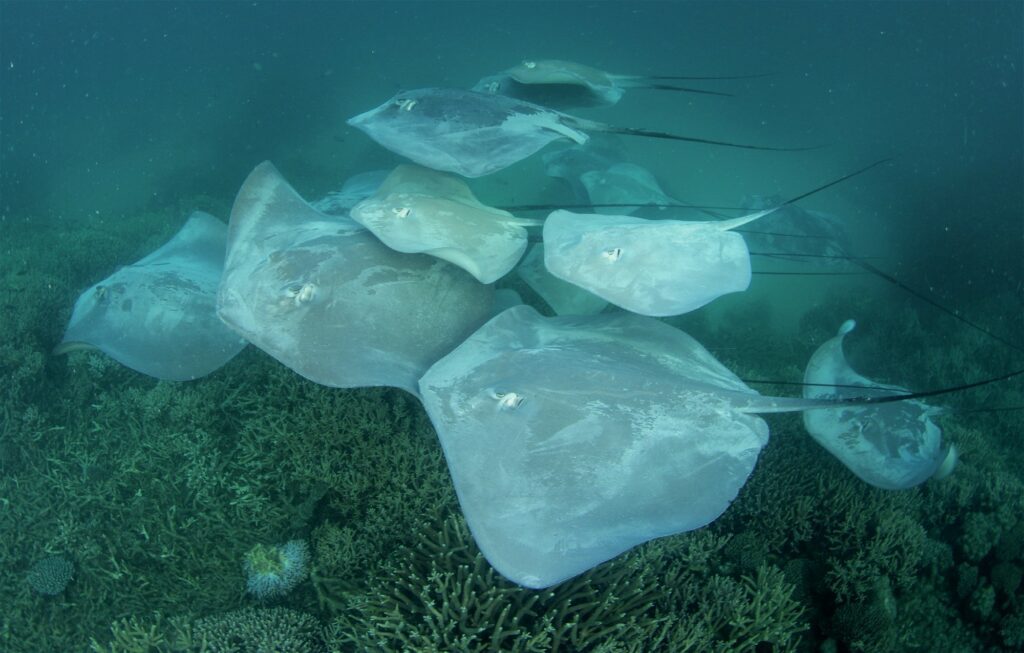
These regions stretch from Ingham down to a bit south of Sarina and offer access to the central section of the Great Barrier Reef. There are regional airports at Townsville and Mackay, plus rail and road access. While the air and water temperatures here are similar to that of Far North Queensland, the scenery is a little different as the rainforest’s giveaway to agricultural land, Mackay, is known for sugarcane and fields of it stretch as far as the eye can see. Inland are several national parks and beauty spots like Finch Hatton Gorge.
Hundreds of kilometres of pristine, empty beaches and numerous stunning tropical islands along this stretch of Queensland coast, including Orpheus, Palm and Magnetic, offer diving. However, visibility can be a bit hit-and-miss at these locations.
Townsville is the main access point to many of the region’s main diving hotspots. The Museum of Underwater Art at John Brewer Reef, plus Lodestone Reef, Wheeler Reef, Keepers Reef, Davies, and Little Broadhurst Reef, are all accessible by day boat. Past the continental shelf, places like Flinders Reef are the realm of liveaboards. Plus, the jewel in the crown of the region, the SS Yongala. The closest town to the Yongala is Ayr, but day boats and liveaboards will make the journey down from Townsville and even Cairns to dive this magnificent wreck.
Further south, Airlie Beach is the main destination of people wanting to visit the stunning Whitsundays, a group of 74 islands synonymous with gorgeous beaches and a relaxed vibe. These islands are ideal for sailing around and offer good diving opportunities at places like Hamilton, Hook and Black Island. However, the outer reef boasts the best diving the area has to offer, with liveaboards venturing out to places like Fairey Reef, Hardy Reef, Bait Reef, Kennedy Reef, Wansfel Reef, Elizbeth reef and beyond. Private charters can also take the intrepid diver further into the coral sea.
The Highlights of North Queensland, Mackay, and Whitsundays
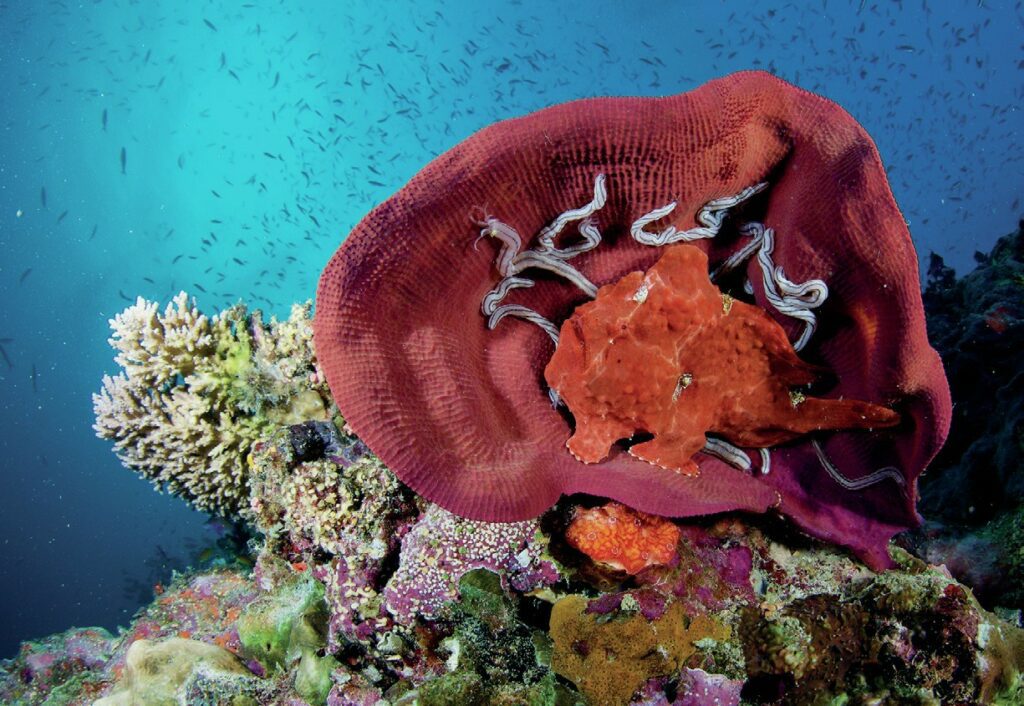
SS Yongala
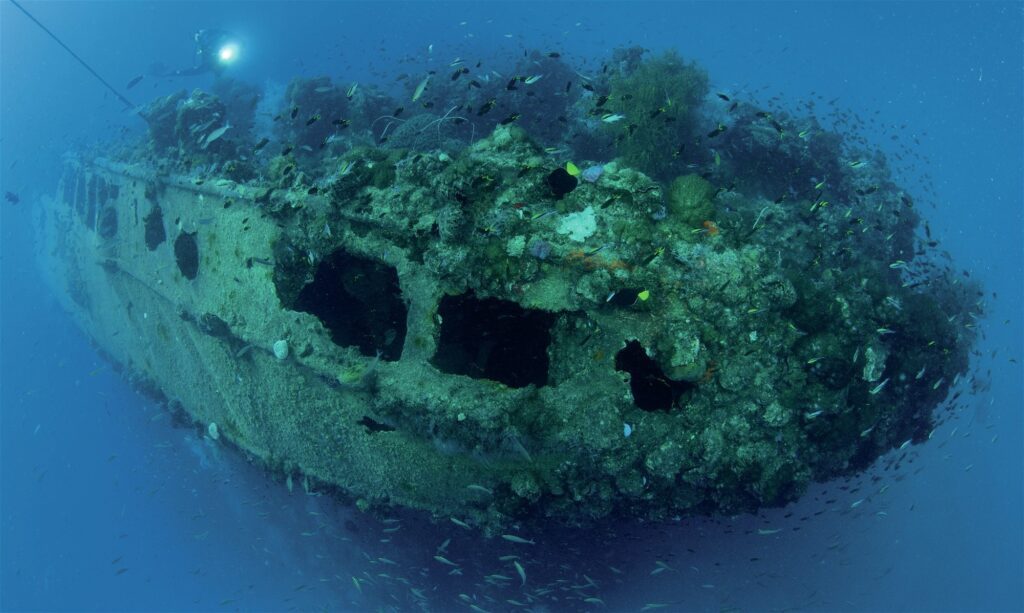
This wreck is often lauded as one of the best wreck dives in Australia because of the staggering amount of marine life attracted to the coral-encrusted remains of the former passenger ship. Small reef fish plus a wealth of little critters can be seen on or around the hull, while turtles, vast schools of fish, sharks, cobia, rays, grouper and much more are all residents or regular visitors.
Flinders Reef
This is another of the coral sea’s spectacular dive sites, with vertical walls dropping over 300m. Massive sea fans, soft corals, and sea whips decorate the reef. The reef is home to abundant marine life, including sharks, tuna, rays and huge schools of fish.
Wheeler Reef
This can be reached by day boats out of Townsville and is just one of the many gorgeous reefs in the area. This platform reef is covered in hard coral and offers some excellent drift diving, and with depths ranging from 2m-30m, it is perfect for all levels of diver. Schools of humphead parrotfish can be found roaming the coral gardens, and substantial Spanish mackerel are often spotted along the sites coral covered walls.
Keeper Reef
A stone’s throw from Wheeler Reef, this offers a fabulous topography of ridges, bommies and swim-throughs, creating a maze of soft coral, hard corals and sea fans. Coral trout, sweetlips, barramundi, and all manner of reef fish take advantage of the numerous ledges, nooks and crannies to hide from predators like reef sharks and large pelagic fish.
Bait Reef
This is located on the edge of the coral sea about 65km from Airlie Beach and is an excellent example of the Great Barrier Reef’s biodiversity, with hundreds of species of corals and fish calling this location home. The reef receives occasional visits from turtles, manta rays and even humpback whales. The topography of sheer walls, shallow coral gardens and coral-covered canyons make this dive site an undiscovered gem.
Seagull Reef
This lies a little further north from Bait Reef. This great site boasts deep wall dives, shallow plate coral gardens, big schools of fish, and plenty of rays.
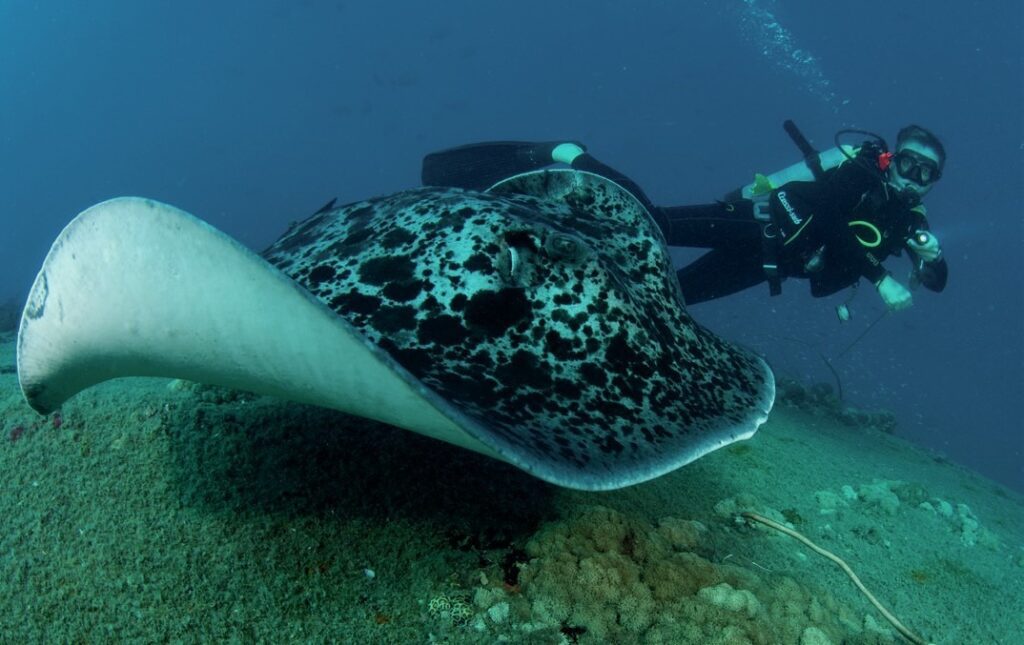
Fitzroy and Wide Bay
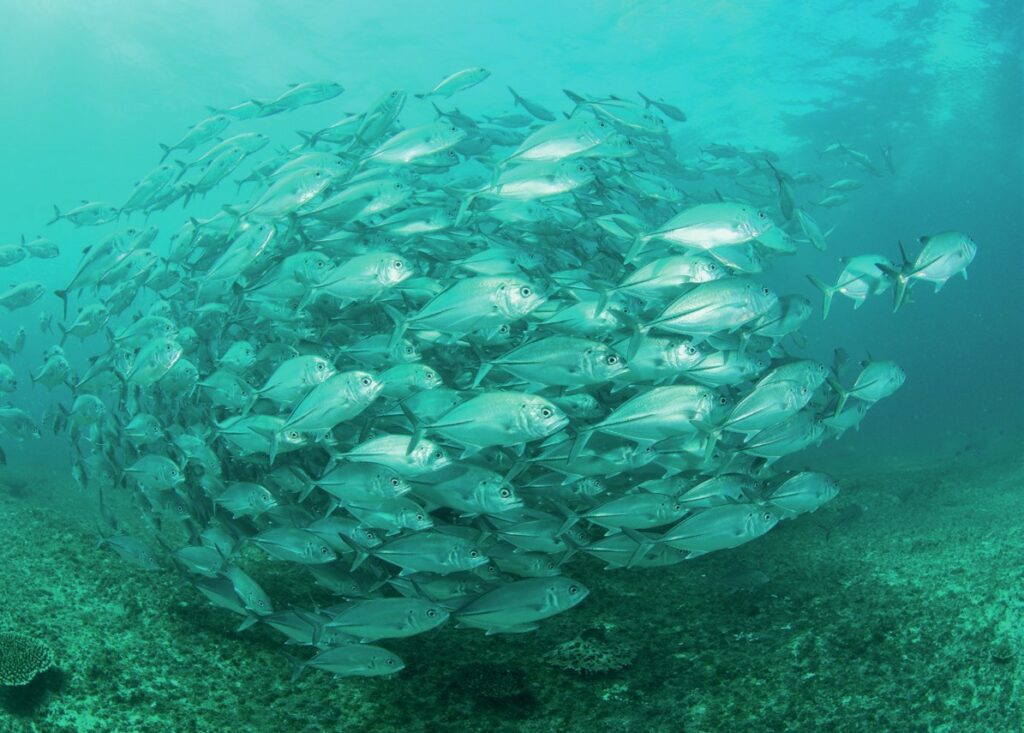
Covering the coastline from a little north of Rockhampton down to Rainbow Beach, these regions offer access to the southernmost reaches of the Great Barrier reef, plus some tremendous subtropical diving. The air temperature varies from 30 degrees C in the summer to around 18 in the winter. The water temperature ranges from 29 degrees C in the summer to 18 in the winter. The main towns of this region are Rockhampton, Gladstone, Bundaberg, and Hervey Bay, all of which have regional airports and are on or close to the Bruce Highway. This area boasts over 33 national parks and is home to the stunning Carnarvon Gorge.
The town of Bundaberg is famous for its rum, and Hervey Bay is one of the best locations in the State to watch the annual humpback whale migration. It is the jumping-off spot for the beautiful Fraser Island.
The diving in this region is also rich and varied. The Capricorn and Bunker groups make up the southern extremities of the Great Barrier Reef and have some genuinely excellent dive spots. Many of the reefs in this area are relatively unexplored and in pristine condition, including Llewelyn, Fitzroy, Lamont, Boult, Hosykyn and Fairfax, to name a few. The group has several stunning islands, including Heron Island, Lady Musgrave Island and Lady Elliot Island, known for its manta rays. Great Keppel Island, just off the coast at Yeppoon, also has some excellent reefs to explore. Further south, past the Great Barrier Reef, fantastic shore diving can be found at Bundaberg. Accessible from either Bunderburg or Hervey Bay is the Ex-HMAS Tobruk, an excellent wreck dive. Hervey Bay also has several other artificial reefs to explore, and at Rainbow Beach, the suburb Wolf Rock is a fantastic subtropical dive site.
The Highlights of Fitzroy and Wide Bay
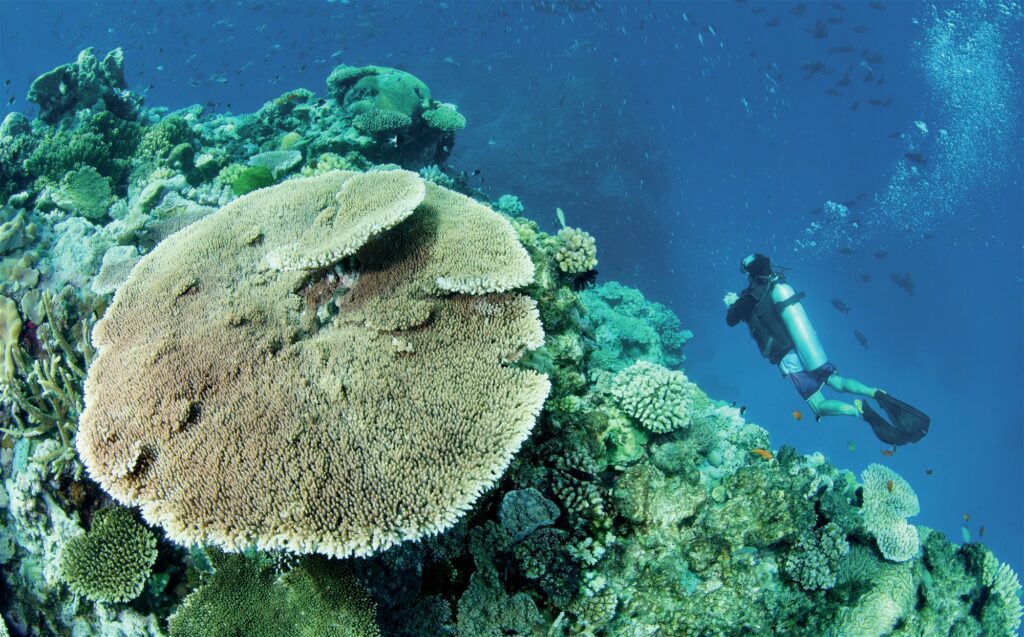
Heron Island
Here divers are treated to hard coral gardens, bommies teaming with marine life and plenty of turtles. Mantas make an occasional appearance, and the odd humpback whale has also been known to pass by. There is also a wreck at the entrance to the harbour that is a terrific site for an early morning snorkel. Schooling fish, sharks, turtles and a plethora of different species of rays frequent this spot.
Lady Elliot Island
Famous for its resident mantas, this tiny island offers year-round interaction with the majestic rays. But Lady Elliot is much more than just mantas, with pristine corals and plenty of other marine life for divers to enjoy.
Lady Musgrave Island
A vast, sheltered lagoon dotted with coral bommies is ideal for a more sedate dive with turtles, a myriad of reef fish and numerous little critters to enjoy. The other reef has a different topography, with walls covered in sea fans and both soft and hard corals. Reef sharks and mantas in the summer months are regular visitors. Like Heron and Lady Elliot, Lady Musgrave Island is a turtle nesting site.
Llewelyn Reef
With pristine 10–15-metre walls on one side and gentle slopes and bommies on the other, is a rarely visited gem of a dive home to coral trout, parrot fish, butterflyfish, snapper and much more. Turtles are abundant, and there is a good chance of seeing mantas here. There are regular sittings of whitetip and blacktip reef sharks. The occasional grey, reef leopard, tiger, silvertip and bull sharks also make an appearance.
Bundaberg shore diving
A rarity in Queensland, the shore diving at Bundaberg offers excellent diving without the need to get on a boat. Nudibranchs, anglerfish, pipefish, coral bommies covered in soft and hard corals and much more are abundant here.
HMAS Tobruk
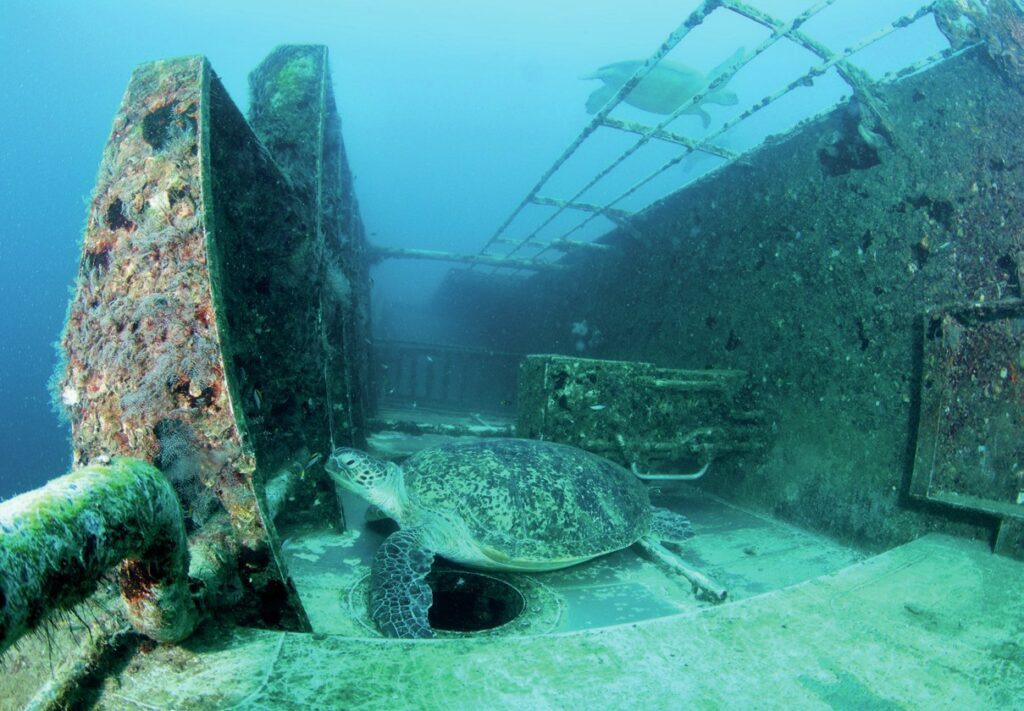
This wreck can be accessed from either Bundaberg or Hervey Bay. This massive vessel was sunk in 2018 and lays on its side at a maximum depth of around 30m. It has become a haven for turtles in its relatively brief time underwater. It attracts huge schools of fish, and various corals have begun their colonisation in earnest. On the superstructure, divers can find octopus, lionfish and scorpionfish, to name a few, and on the seafloor around the wreck, colossal grouper, cod, wobbegongs and rays can be found.
Wolf Rock
This is just minutes from the picturesque Rainbow Beach and is an action-packed adrenaline ride of a dive site. This rocky multi-peaked pinnacle rises to the surface from the sandy seafloor at 35m. It is home to large numbers of grey nurse sharks but also receives regular visits from bull rays, manta rays, turtles and all manner of pelagic fish.
Southeast Queensland
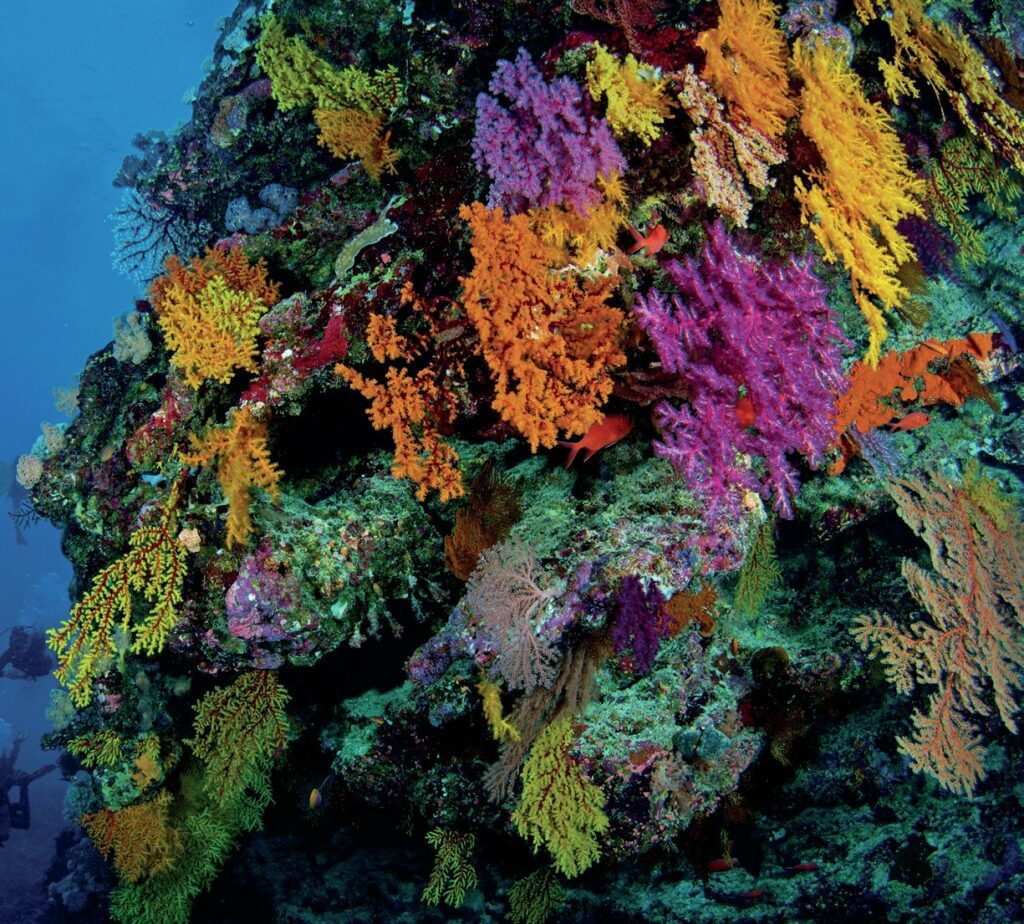
This area covers the main metropolitan areas of Queensland from the Sunshine Coast down to the Gold Coast. The glass house mountains offer spectacular top-side scenery, and the Australia zoo and several theme parks are more of the region’s main attractions. The Sunshine Coast, Brisbane and the Gold Coast contain everything you would expect of busy metropolitan areas and are serviced by two international airports, Brisbane and the Gold Coast.
Like much of Queensland, the coastline is blessed with endless beautiful beaches and great surf breaks. The air temperature is similar to the rest of the State; give or take a degree, the water temperature in the winter can drop down to around 14 degrees C, so although diving is year-round adequate thermal protection is needed.
While there is no longer any Great Barrier Reef to dive on, there are plenty of superb dives, from temperate water reefs to stunning wrecks. Mudjimba island off the sunshine coast offers excellent critter and turtle spotting opportunities, and the ex-HMAS Brisbane is a world-class wreck dive.
There is also Curtain artificial reef at Moreton Island, which comprises of barges and dredgers, plus the shallow wrecks of Tangalooma, which are great for snorkelling. In addition to the wrecks, Moreton Island boast some great temperate water reefs like Flinders Reef, Gotham City and Cherubs Caves.
Its neighbour North Stradbroke Island is as picturesque beneath the water as it is above, with excellent dive sites like Manta Bommie and Flat Rock. The Gold Coast caters for shore divers with critters galore at the seaway, plus more artificial reefs like Wonder Reef and the Scottish Prince. The Gold Coast also has some great reef dives at cook island and nine-mile reef.
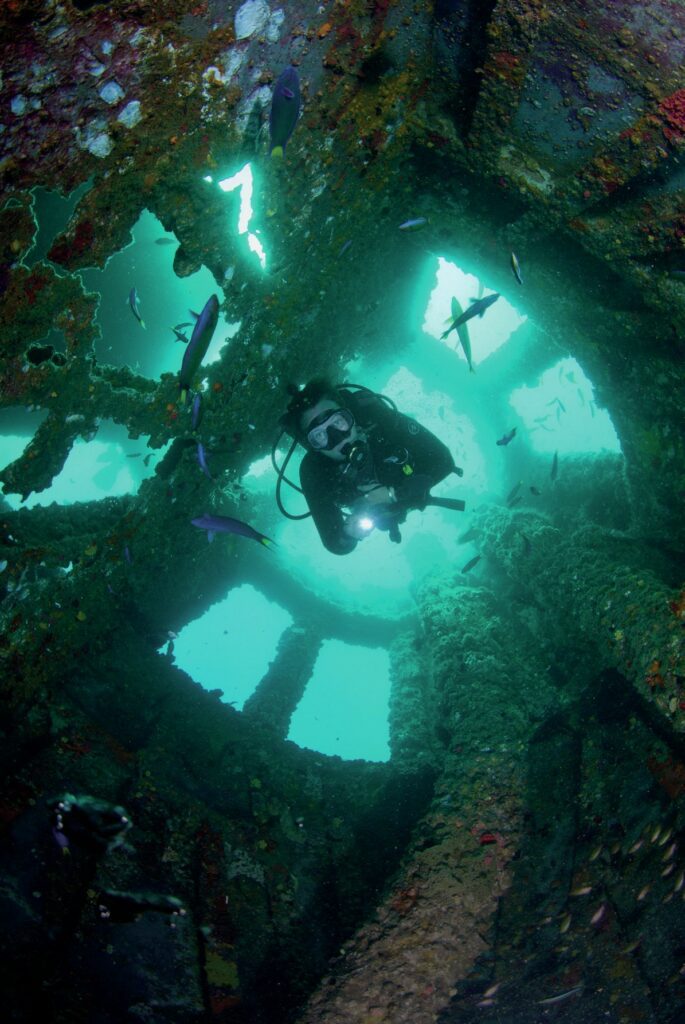
The Highlights of Southeast Queensland
Ex-HMAS Brisbane.
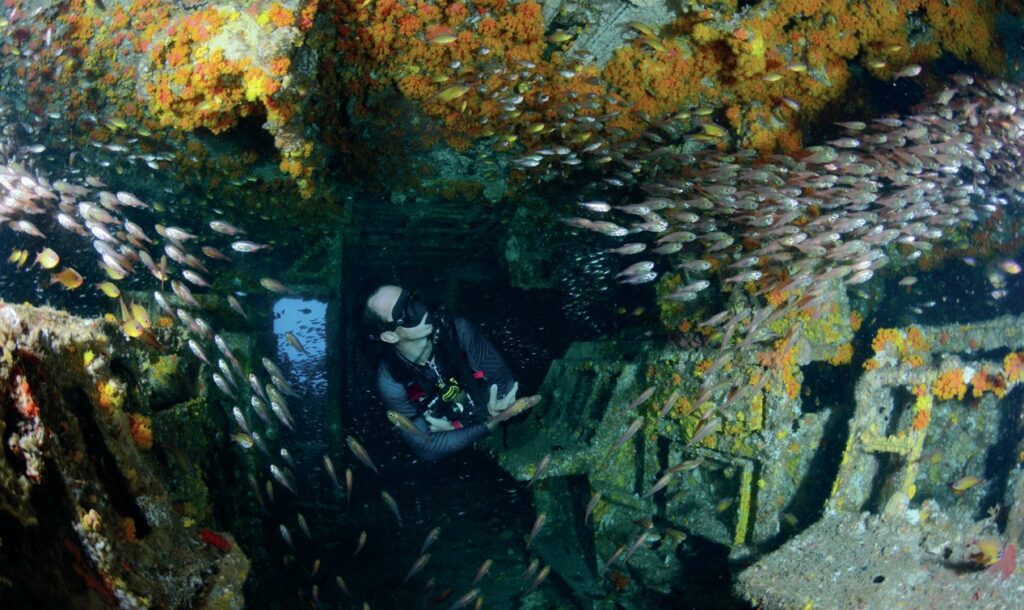
This wreck is located a few kilometres from the beaches of the Sunshine Coast and is an absolute gem of a dive. The superstructure is alive with critters and an impressive amount of soft and hard corals. Baitfish, silversides and cave sweeper have congregated here in their millions, and the amount of other marine life drawn to this wreck is staggering, including schools of batfish, snapper, tuna, rainbow runners, wahoo, and even the occasional shark.
Flinders Reef
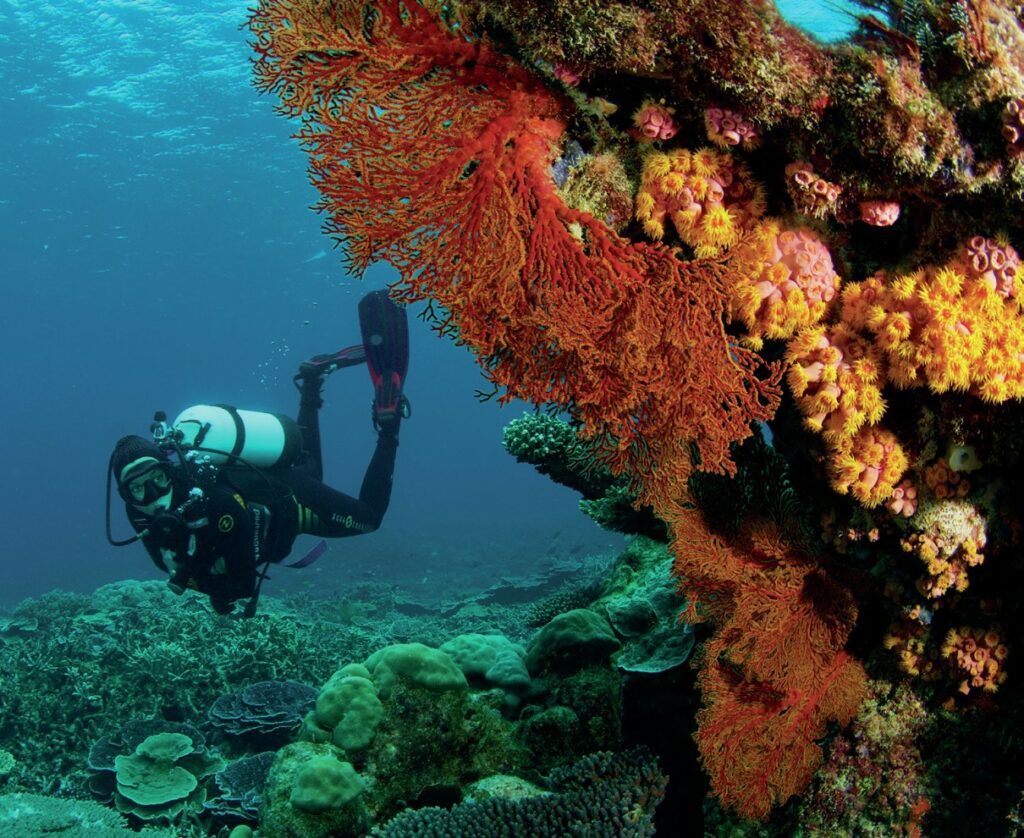
This is a mere stone’s throw from Brisbane, off Morten Island. It is a stunning subtropical reef. Home to over a hundred species of coral and almost 200 species of reef fish, it would be easy to think you are still on the Great Barrier Reef when diving here. Other residents include wobbegong sharks, stingrays, cuttlefish, octopus and turtles.
Gotham City
This is another of the reefs located just off Moreton Island, and along with Cherubs Caves, it is considered one of the best dives in the area. A massive granite Rock likened to a smaller version of Uluru rises 15m from the seabed. Its sheer walls are covered in corals and attract a huge variety of marine life.
Manta Bommie
This is a collection of submerged rocks, and its exposed location makes visiting the site very weather dependent. This cleaning station attracts migrating mantas in the summer months, and these graceful creatures arrive in large numbers. Also attracted to the Bommie are leopard sharks, wobbegongs and serval species of giant stingrays.
Gold Coast Sea Way
Another of only a few shore dives that Queensland has to offer. The site attracts larger fish and marine animals, but the highlight of this location is the number of unusual critters that can be found here. Frogfish, seahorse, nudibranchs, pipefish, velvetfish and a variety of other strange little creatures,
Scottish Prince
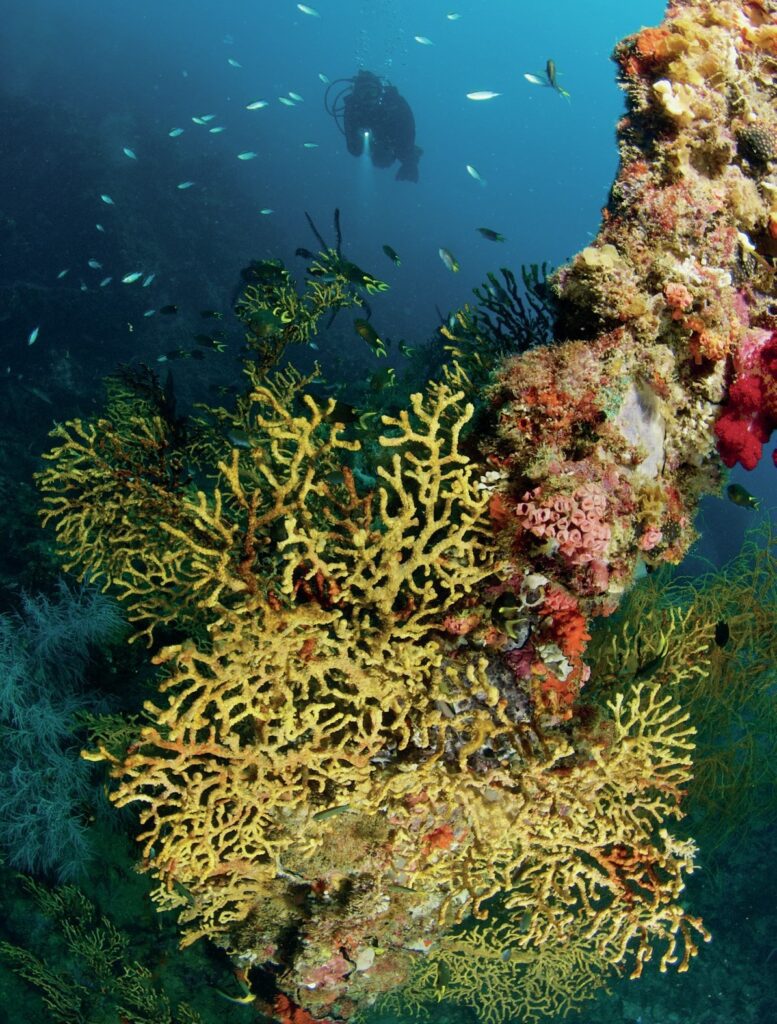
Just a few hundred meters from the shore, is the wreck of the Scottish Prince. Visibility can be a bit hit and miss, but whatever the conditions, this historical wreck is covered in vast schools of fish, plus some very active and curious wobbegongs.
Nine Mile Reef
In the winter months, hundreds of grey nurse sharks can be found on this rocky reef system. Then as the water warms up, the leopard sharks move in. There are wobbegongs, bull rays, marble and stingrays, and large schools of fish all year round.
Summary
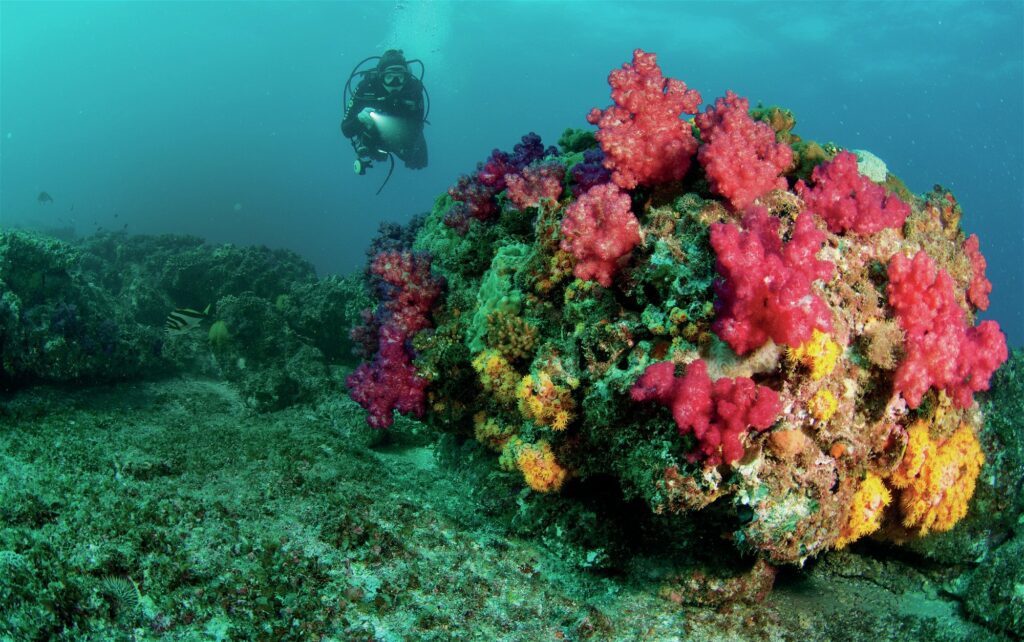
Queensland has been blessed with the largest barrier reef in the world, but the diving here is so much more than just a mind-blowing reef system. The waters off Queensland offer unique animal encounters, numerous wrecks and stunning reefs, both tropical and temperate. In this article, we have only scratched the surface of the sunshine State’s diving delights. Contact one of the liveaboards or dive centres directly for greater insight into each region’s offerings.
This article was originally published in Scuba Diver ANZ #56
Subscribe digitally and read more great stories like this from anywhere in the world in a mobile-friendly format. Link to the article
